China – The Great Infrastructure Developer
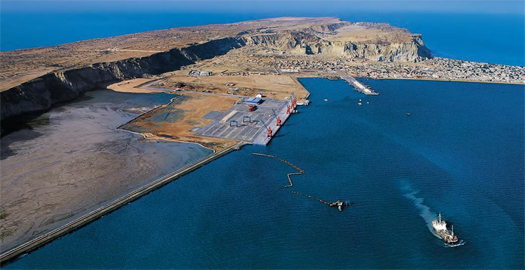
China has provided over 80 percent of the US$248 million initial development costs for Pakistan’s Gwadar Port on the Indian Ocean, while Chinese SOEs have led the port’s construction and are now in charge of its operations.
Chinese outbound investment is growing – but it’s not going where you may think
By Chris Devonshire-Ellis and Sondre Ulvund Solstad, Dezan Shira & Associates
Mar. 27 – There has been a lot of discussion these days focused on the potential for investment by China into international projects, with many governments, including those in the United States and Europe, keen to attract Chinese investment. While China remains non-discriminatory to nations when it comes to securing energy and commodity supplies, and will deal with anyone who is prepared to sell such assets, another picture is emerging over where China is investing overseas.
As we noted in our recent Asia Briefing piece on the expected establishment of a BRICS Development Bank, many emerging nations feel left behind by organizations such as the World Bank and International Monetary Fund that remain dominated by the United States and European Union. Such entities are perceived to be lacking in vision and are failing to keep pace with the changing dynamics of global growth.
Other than state-supported purchases of supplies, the real answer to where China is investing lies within its own backyard. Anyone who last visited China 20, 10 or even 5 years ago and returns today will immediately notice the massive boom in infrastructure that has taken place in the country. From practically dawdling coal locomotives to cutting-edge high speed rail in 30 years is some accomplishment. Anyone who has read Paul Theroux’s “Riding the Iron Rooster” will recall his accounts of traveling across China by train in 1988; aptly demonstrating the progress in infrastructure development that China has made over the years. That was just five years before the establishment of Dezan Shira & Associates, and Theroux tells of coal-powered steam locomotives running the length and breadth of China. The Iron Rooster being of course, an old fashioned steam loco, which is still used for industrial purposes in some of China’s poorer provinces today. Even today, China hasn’t completely phased their usage out.
The same is true of roads and airports. I recall the main Beijing airport expressway being a two-lane road frequented by donkey and cart (the road still exists to the side of the new eight-lane highway, serving local villages as traffic zooms past along the new road) while China’s airport terminals, once shabby versions of Soviet-built breeze block architecture are now constructed by internationally renowned architects. Just 15 years ago, the main source of refreshment at Beijing Airport was a cup of dried noodles and a massive, steaming hot water samovar used to drown them in. Now there are executive lounges, state-of-the-art facilities, and world-class shopping options with WiFi throughout.
If those are the clues, they are ones well worth noting. China’s overseas investments have largely been infrastructure-driven, with the exporting not just of cheap construction technology, but Chinese labor to go with it. This article highlights many of the projects China has been involved in and spells out the message very clearly: if you need roads built, China is your answer.
In this article, we discuss China’s foreign aid policy and identify some of the key geographic regions that China is supporting.
Overview of Chinese Foreign Aid Distribution
While programs to assist other countries have been in place since the 1950s, the amount of money allocated to Chinese Official Development Assistance (ODA – also called Foreign Aid) has increased rapidly in recent years. Aid nearly tripled in the eight-year period from 1999 to 2007, from RMB4 billion to RMB11 billion – and a large amount of aid has also been given as debt relief, which is not included in these totals. The Chinese government claims RMB25.5 billion in loans to developing nations had been forgiven by the end of 2009.
“The lion’s share of China’s officially supported activities in other developing countries do not take the form of, and would not qualify as, official development assistance,” states Deborah Brautigam, professor at the American University’s School of International Service. “The DAC [Development Assistance Committee, an organization facilitating aid cooperation between many OECD countries] sees foreign aid as very important for development in the poorest countries; the Chinese, drawing on their experience, see investment and infrastructure as central.”
“[The West has] by and large, gotten out of ‘hard’ infrastructure sectors,” comments World Bank Senior Economist David Dollar. “They channel their assistance overwhelmingly to social sectors or to infrastructure sectors such as water supply and sanitation that have direct effects on household health.”
Dollar further states that after cutting ‘hard’ infrastructure aid in the 1980s, Western countries expected the private sector to step in, which proved to be wishful thinking. In Africa, this has led to a severe infrastructure deficit, and a terrific opportunity for China. In fact, China is currently Africa’s main trading partner with trade between the two sides hitting a record US$163 billion in 2012, a three-fold increase since 2006.
Furthermore, China built a new US$200 million state-of-the-art headquarters complex for the African Union last year, and pledged loans of US$20 billion to African nations to invest in infrastructure and agriculture by 2015. China is also set to build a trans-West African highway (which will go through nine countries) in an agreement signed with the Economic Community of West African States.
According to the Chinese government’s website, by the end of 2009, China had helped other developing countries build 442 economic infrastructure projects, including:
- The Sana’a-Hodeida Highway in Yemen
- The Karakoram Highway and Gwadar Port in Pakistan
- The Tanzania-Zambia Railway
- The Belet Uen-Burao Highway in Somalia
- The Dry Dock in Malta
- The Lagdo Hydropower Station in Cameroon
- Nouakchott’s Friendship Port in Mauritania
- Railway improvements in Botswana
- Six bridges in Bangladesh
- One section of the Kunming-Bangkok Highway in Laos
- The Greater Mekong Sub-region Information Highway in Myanmar
- The Shar-Shar Tunnel in Tajikistan
- The No.7 Highway in Cambodia
- The Gotera Interchange in Addis Ababa of Ethiopia
Regional Investment Examples
Middle East
Egypt
- Chinese investment in Egypt increased 60 percent in 2011 to reach US$80 billion.
- China provided loans of US$200 million to the Egyptian government in 2012.
- Sino-Egyptian economic relations are expected to boom under the new leadership of Egyptian President Mohamed Morsi who visited China in late August, making China the first state he had set foot on outside of the Middle East and Africa. (Source: Xinhua)
- During the same meeting in 2012, contracts were also signed by Chinese companies which will build a power station, a water desalination plant, and a high-speed train line between Cairo and Alexandria.
- Egypt is China’s biggest weapons market in Africa.
- Egypt received 700 Chinese vehicles as part of Chinese government aid in 2011, and China pledged to provide US$19 million in aid in 2012.
- Trade between China and Egypt has been increasing rapidly in recent years. In 2011, bilateral trade was US$8.7 billion, a 26 percent increase year-on-year.
- Direct flights from China:
- Beijing-Cairo (3 flights weekly)
- Guangzhou-Cairo (3 flights weekly currently, 5 flights weekly from April 2013)
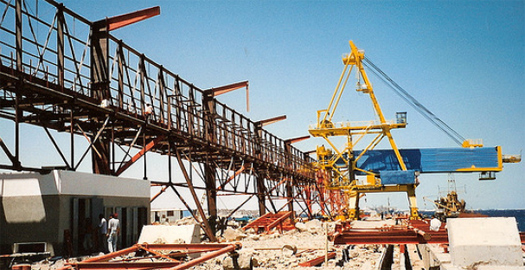
China’s Development of Egypt’s Port Safaga
Iraq
- In February 2010, Beijing cancelled 80 percent of Iraq’s US$8.5 billion debt to China, a move designed to further Chinese business interests in the country. This waiver came on the heels of a two-year period (2009-2010) in which China and Iraq signed trade deals worth approximately US$3.8 billion.
- Chinese firms have been willing to tolerate high levels of risk in order to gain access to Iraq’s lucrative oil contracts. These deals have made China the biggest investor in Iraq’s oil and gas industry.
- China has won stakes in 3 out of the 11 oil contracts offered by the Iraqi government, in addition to renegotiating a Saddam Hussein-era deal worth around US$3 billion. (Source: China-U.S. Focus)
- Direct flights from China:
- None (flights available to Baghdad via Doha and Istanbul)
Iran
- Driven by economic interests, China is one of the only major players still active in the Iranian oil market.
- Nevertheless, investments which totaled US$3 billion in 2011-2012 have sharply decreased to US$400 million, according to a March 2013 statement by the head of the Iranian Chamber of Commerce.
- Trade between China and Iran was US$45 billion in 2011.
- Direct flights from China:
- Beijing-Tehran (4 flights weekly)
- Urumqi-Tehran (3 flights weekly)
- Shanghai-Tehran (Monday, Wednesday, Friday)
- Guangzhou-Tehran (commencing May 19, 2013)
Kuwait
- As a developed country, Kuwait is not known to receive any aid from the Chinese government, but China is increasingly involved as an investor and infrastructure builder in the country.
- The China Communications Construction Company Ltd., the largest state-owned transportation infrastructure group in China, won a US$408 million contract from the Kuwaiti government to construct the Boubyan Port’s entrance. This project has already started.
- The Kuwaiti government has been consulting with the China Great Wall Industry Corporation (CGWIC) regarding investment opportunities in Kuwait and discussing the Kuwaiti government’s plans to launch a satellite (CGWIC is the sole Chinese company allowed by the Chinese government to provide space-related commercial services, such as launching satellites).
- Direct flights from China:
- None (flights available to Kuwait City via Doha and Abu Dhabi)
Saudi Arabia
- As with Kuwait, Saudi Arabia does not seem to receive aid from the Chinese government, but is increasingly important as an investment location for the Chinese (with the Saudi reciprocating the interest by increasing their presence in China as part of King Abdullah’s “Look East” strategy).
- Chinese firms have begun to invest in infrastructure and industry in Saudi Arabia, including in an aluminium smelter in the southern province of Jizan, at a cost of US$3 billion.
- Direct flights from China
- Beijing-Jeddah (4 flights weekly)
- Guangzhou-Jeddah (1 flight weekly)
- Guangzhou-Riyadh (3 flights weekly)
Libya
- Despite opposing the NATO-led intervention supporting the rebels which overthrew Muammar Qaddafi’s regime in 2011, China embraced the National Transitional Council in August 2011. This was seen by some analysts as a move to protect economic interests in the country, including the potential for post-war contracts.
- In all, Beijing had outstanding contracts worth about US$20 billion before the war, employing 36,000 Chinese before the revolution. (Source: The Diplomat)
- Direct flights from China:
- None (flights available to Tripoli via Istanbul and Abu Dhabi)
Lebanon
- Ge Hua, commercial counselor of the Chinese embassy in Beirut, said in 2010 that as much as 10,000 Lebanese were coming to China for business every year. In 2010, trade between the two countries was US$1.47 billion. He also said that China is increasing its aid to Lebanon.
- Currently, China is helping Lebanon build a mobile telecommunication network and solar heating systems.
- Direct flights from China:
- None (flights available to Beirut via Doha, Abu Dhabi and Dubai)
East Africa
Kenya
- Chinese companies have focused their investment in Kenya on the fields of infrastructural development, automobile industry, food and beverage markets, and electronics. There are also medium-size Chinese enterprises investing in interior decor, construction and agricultural machinery, and also in the hospitality industry. Chinese restaurants and hotels have sprung up all over Nairobi. On a financial level, the Central Bank of Kenya recently granted the state-owned Bank of China a license to open a representative office in Nairobi. (Source: UPI)
- Bilateral trade reached US$2.4 billion in 2011, with total Chinese investments of US$280 million in the same year.
- “The Chinese government is currently funding different projects in the country ranging from a 40 kilometer super highway from the capital of Nairobi to the industrial town of Thika…and are building a referral hospital in Nairobi.” (Source: News Time Africa)
- Direct flights from China:
- Guangzhou-Nairobi (4 flights weekly)
Tanzania
- China has been granting aid to Tanzania since the 1960s, and has funded over 100 infrastructure projects in the country.
- Highlights of the infrastructure projects are the Tanzania-Zambia Railway (TAZARA), Tanzania National Stadium, and the Water Supply Project in Chalinze.
- China has extended over US$2 billion in aid to the country since the 1960s.
- China represented the largest source of FDI to Tanzania in 2012, investing US$1.4 billion. In September 2011, Sichuan Hongda Co. a Chinese Zinc producer signed a US$3 billion agreement to develop coal mining and steel production projects in the country.
- The Export-Import Bank of China in 2012 loaned US$1.2 billion to build a 500-kilometer gas pipeline from Mtwara to Dar es Salaam.
- Direct flights from China:
- None (flights available to Dar es Salaam via Dubai, Cairo, and Addis Ababa)
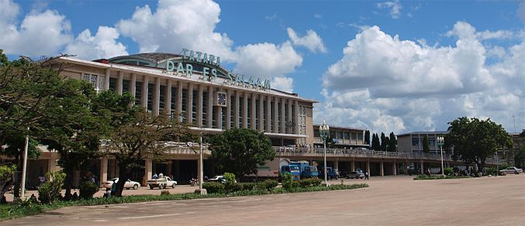
The TAZARA Railway, built and financed by China in the 1970s, links the Tanzanian port of Dar es Salaam with the town of Kapiri Mposhi in Zambia.
Ethiopia
- In 1972, China financed the Wereta-Weldiya road across Ethiopia’s Rift Valley. Between 1998 and 2004, the Chinese contributed 15 percent of the cost of Addis Ababa’s ring road (Ethiopia paid the rest). The fully-equipped Ethio-China Polytechnic College opened in late 2009, funded by Chinese aid. At the college, Chinese professors offer a two-year degree with Chinese language classes alongside engineering skills. (Source: The Guardian)
- The volume of trade amounted to about US$1.5 billion last year.
- Direct flights from China
- Beijing-Addis Ababa (Daily)
- Guangzhou-Addis Ababa (Daily)
- Hangzhou-Addis Ababa (Daily)
Nigeria
- Chinese investment in Nigeria is expected to exceed US$10 billion in 2012, with the trade volume between the two countries currently beyond US$8 billion as of October 2012.
- In 2006, China and Nigeria signed a US$4 billion agreement on oil and infrastructure projects, which included four drilling licenses for China.
- China and Nigeria signed a US$23 billion agreement for China to build three oil refineries and a fuel complex in 2010.
- The two countries are also constructing one of Africa’s largest free trade zones on the edge of the commercial capital Lagos. Known as the Lekki Free Trade Zone, the first phase of the vast joint venture will cost US$5 billion, and will stretch over 16,000 hectares when complete. (Source: Christian Science Monitor)
- Only 1 percent to 2 percent of Nigeria’s total crude oil exports go to China.
- Direct flights from China:
- None (flights to Lagos available via Addis Ababa and Doha)
Sudan
- In 2012, 70 percent of the Sudan’s oil exports went to China.
- China has invested over US$10 billion in Sudan over the past two decades.
- The Chinese presence is not only seen in the oil industry, but detected in other infrastructure projects such as the Merowe Dam, located about 220 miles north of the capital Khartoum. The US$1.8 billion dam, situated on the Nile river and completed in 2009, has a capacity of 1,250 megawatts. The dam, which doubled Sudan’s electricity generation, is believed to have displaced about 50,000 people to arid terrains. The Merowe Dam is the largest hydropower project both in Sudan and Africa. (Source: Christian Science Monitor)
- Direct flights from China:
- None (flights to Khartoum available via Doha, Cairo and Addis Ababa)
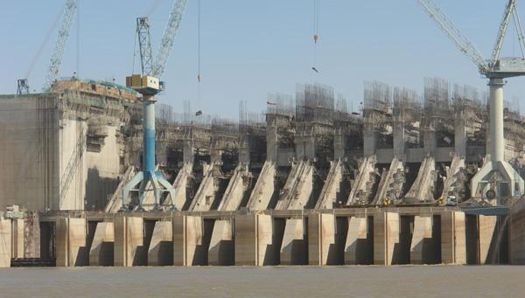
Built and financed with China’s aid, the Merowe Dam in Sudan is Africa’s largest contemporary hydropower project.
South Sudan
- In what is perhaps a telling move, China has already given a US$8 billion loan to the world’s youngest country, South Sudan, with the funds earmarked for road, hydropower, infrastructure and agriculture projects.
- Direct flights from China:
- None (flights to Juba available via Cairo and Addis Ababa)
Asia
Afghanistan
- China’s primary form of assistance to Afghanistan has been investment in energy and mineral resources. Symbolic of such investment is the deal to develop the Aynak Copper Mine, which is potentially one of the world’s largest copper sources. It is a Chinese project jointly managed by the Metallurgical Corporation of China and Jiangxi Copper with more than US$3 billion worth of investment.
- These state-owned Chinese firms have made substantial and long-term investments in Afghanistan. In need of routes to extract the materials they mine, they are invested in ensuring that the nation gets the appropriate infrastructure, linking the natural resource projects in Afghanistan to its burgeoning transport network in Central Asia. As mentioned, the proposal for Aynak included the construction of a railroad to Kabul, which would connect to Chinese rail projects in the north of Afghanistan and onward into Tajikistan, Kyrgyzstan and Western China. This network is also set to stretch to the Indian Ocean, the Chinese-built port at Gwadar in Pakistan, and the Iranian coast. (Source: National Interest)
- Between 2002 and 2011, Beijing contributed around US$230 million to Afghanistan’s reconstruction.
- Direct flights from China:
- Urumqi-Kabul (1 flight weekly)
Pakistan
- China recently pledged to greatly increase its investment in Pakistan from the current levels of roughly US$1.4 billion. Bilateral trade is reported to be around US$9 billion.
- A recent mega-project is the 1 million acre industrial megacity called Zulfiqarabad, said to be a “pet project” of Pakistani President Asif Ali Zardari.
- “Chinese economic diplomacy has been far more effective than American security diplomacy over recent years,” comments Professor Maria Sultan, of the Islamabad-based South Asian Strategic Institute, tells the Guardian. “All the schools in Sindh [Pakistan’s large southern province] now teach Chinese as a second language.”
- Direct flights from China
- Beijing-Islamabad (2 flights weekly)
- Urumqi-Islamabad (3 flights weekly)
- Beijing-Karachi (2 flights weekly)
- Chengdu-Karachi (2 flights weekly)
- Beijing-Lahore (1 flight weekly)
Sri Lanka
- China has financed a large number of infrastructure projects in the nation in recent years, including the country’s second international airport (US$209 million), the Hambantota Port (the planned second phase will add US$1 billion in Chinese loans to the roughly US$400 million borrowed for its initial phase of development), and the country’s first communication satellite. These projects are all financed by Chinese state-run banks and carried out by Chinese construction companies.
- The eight-lane highway that recently opened between the capital city of Colombo to Galle has cut the journey time down from 6 hours to just 90 minutes. An East-West route is also planned to link Colombo with Kandy, the country’s second-largest city, another journey that by road that currently takes 4 hours and will be reduced to 1 hour.
- Direct flights from China:
- Beijing-Colombo (2 flights weekly)
- Guangzhou-Colombo (2 flights weekly)
- Kunming-Colombo (3 flights weekly)
- Shanghai-Colombo (1 flight weekly)
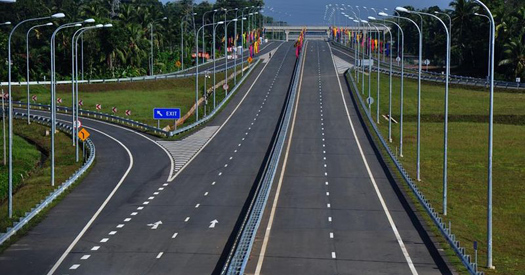
Sri Lanka’s Southern Expressway, now open, links the capital Colombo to Galle. Built with Chinese investment, engineers and workers, with an extension further south and east to Matale to be finished later this year. The entire 160 kilometer route will have taken five years to complete, costing US$10 million per kilometer to build.
Nepal
- In 2012, China offered US$119 million in aid to Nepal to boost infrastructure and security. Then-Chinese Premier Wen Jiabao visited the country last January, saying that the multimillion dollar offer promised additional assistance to Nepal’s infrastructure projects.
- Chinese projects include a US$1.6 billion hydropower plant, a recently completed 22 kilometer stretch of road, and an offer to build an international airport in Pokhara.
- On top of infrastructure development, two dozen Chinese companies have invested US$100 million in other areas of tourism in Nepal.
- Direct flights from China:
- Chengdu-Kathmandu (2 flights weekly)
- Guangzhou-Kathmandu (daily)
- Kunming-Kathmandu (4 flights weekly)
- Lhasa-Kathmandu (3 flights weekly)
Bangladesh
- China is currently competing for influence in Bangladesh with India, its regional competitor. It is also pressured by the Dhaka government to make investments to make up for its huge trade surplus with Bangladesh.
- China has agreed to make the second-biggest investment by any nation in Bangladesh by contributing two-thirds of the US$659 million construction cost of a fertilizer factory in Sylhet.
- The Bangladesh Air Force signed an agreement with China last year to purchase sixteen F-7BGI fighter planes, three MI-171 helicopters and two Air Defense radar systems, worth roughly US$600 million.” (Source: Asia Times)
- By 2011, around 55 Chinese businesses had submitted 186 investment proposals in the country’s infrastructure, trade and business sectors that were worth US$320 million.
- The centerpiece of China’s growing influence in Bangladesh is symbolized by its interest in modernizing the Chittagong Port, which handles around 92 percent of the country’s trade, and in building a new deep-water port facility from scratch at Sonadia, located near Cox’s Bazaar.” (Source: Future Directions International)
- In 2011, Bangladesh signed a loan agreement worth US$211 million with the Export-Import Bank of China to upgrade the country’s telecommunications network.
- Direct flights from China:
- Beijing-Dhaka (daily)
- Guangzhou-Dhaka (3 flights weekly)
- Kunming-Dhaka (daily)
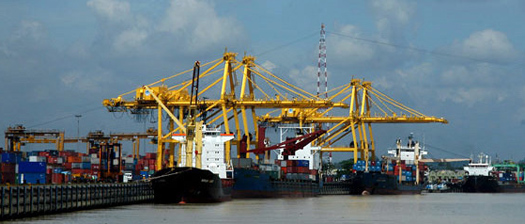
China is looking to further develop Bangladesh’s existing port facilities in Chittagong, and is interested in aiding Bangladesh in the creation of a new deep-water port on Sonadia Island.
When it comes to outbound investment, the Chinese government already has a clear vision aimed at securing vital energy and resource supplies, which it is prepared to purchase (often in return for providing infrastructure development).
But the Chinese government will also sell infrastructure development programs, and is doing so mainly to emerging nations. It makes sense – China has a massive workforce, many of which are contracted as part of BOT projects to physically execute the development projects. On occasions, such as in India recently, scandals have broken out over Chinese laborers working abroad under tourist visas and displacing local labor. However, it is also true that Chinese labor management is disciplined and the working crews get the job done efficiently and effectively – often moreso than local labor would be able to manage.
As a British politician wryly noted after a Chinese bid to build a power plant in the United Kingdom was recently rejected: “The Chinese didn’t seem able to grasp that politically, the tender process could not accept several thousand Chinese laborers descending upon Newcastle to build it.”
Emerging nations, many of which are geographically close to China – are being settled down politically by China’s investments into much-needed infrastructure projects. The same is true of Africa and the Middle East. After all, Chinese migrant workers have worked around the world for well over 200 years – many helped build America’s railroad system. A wander around San Francisco’s excellent “Chinese Historical Society of America Museum” describes the historical background to this very well, and I have also visited the preserved shanties from the 1800s in New Zealand where many Chinese workers dug for gold.
The latter-day phenomenon of Chinese outbound infrastructure is nothing new. The difference is that today, it is funded by the Chinese state, as opposed to colonial imperialists. And with the development of institutions such as the BRICS Development Bank, China will gain more traction among emerging nations around the world. The World Bank and IMF now have a serious competitor on their hands, while Western city mayors looking to attract Chinese investment in infrastructure had better be prepared to allow Chinese workers on the job, or those road potholes will require fixing at an even larger cost to the taxpayer.
Chris Devonshire-Ellis is the founding partner and principal of Dezan Shira & Associates – a specialist foreign direct investment practice, providing corporate establishment, business advisory, tax advisory and compliance, accounting, payroll, due diligence and financial review services to multinationals investing in emerging Asia.
For further details or to contact the firm, please email china@dezshira.com, visit www.dezshira.com, or download the company brochure.
You can stay up to date with the latest business and investment trends across Asia by subscribing to Asia Briefing’s complimentary update service featuring news, commentary, guides, and multimedia resources.
Related Reading
 China’s Neighbors (Second Edition)
China’s Neighbors (Second Edition)
This unique book is an introductory study of all 14 of China’s neighbor countries: Afghanistan, Bhutan, India, Kazakhstan, Kyrgyzstan, Laos, Myanmar, Mongolia, Nepal, North Korea, Pakistan, Russia, Tajikistan and Vietnam.
- Previous Article China to Further Strengthen Intellectual Property Rights Protection
- Next Article Q&A on China’s Monetary Policy and Financial Reform


























